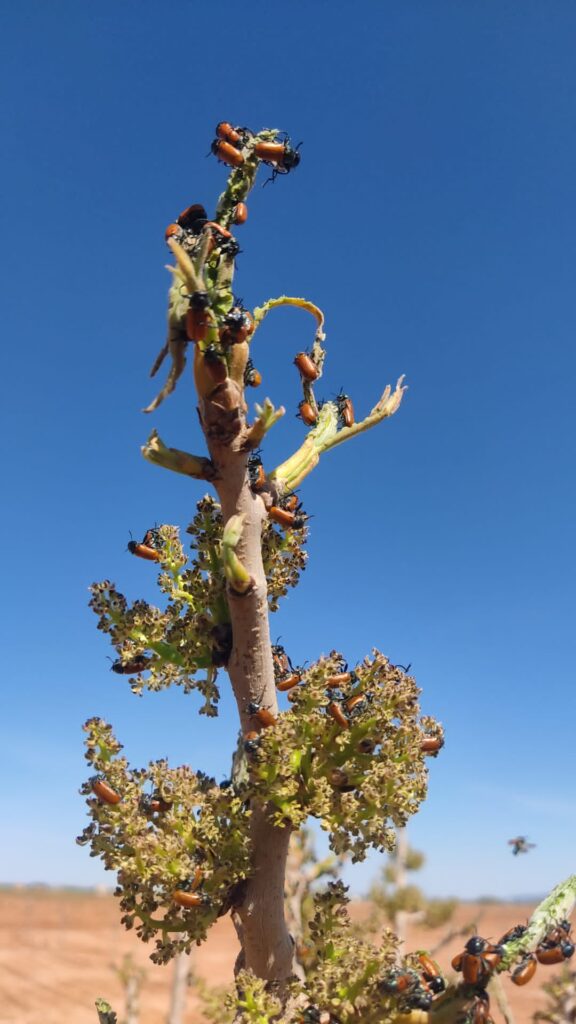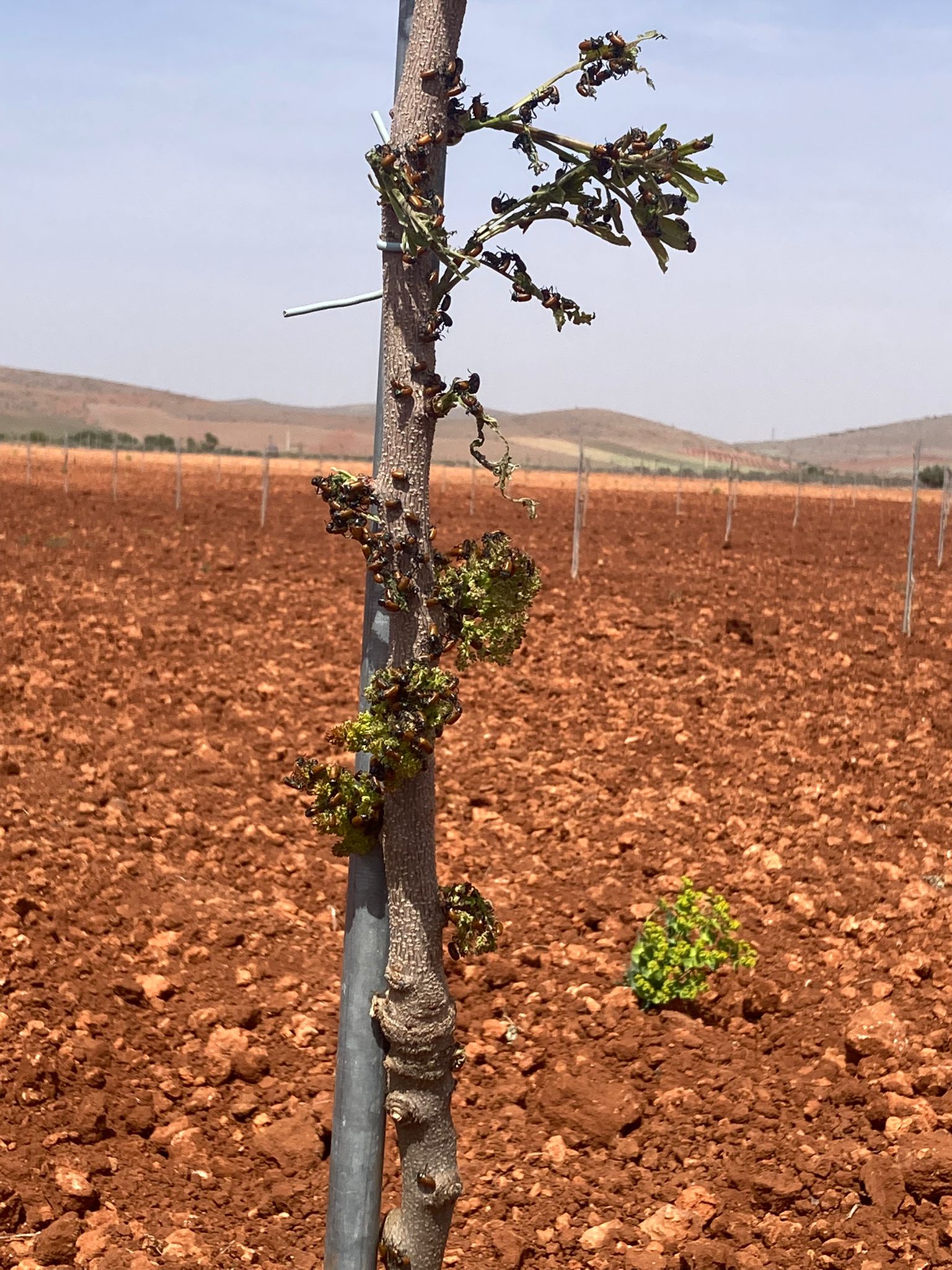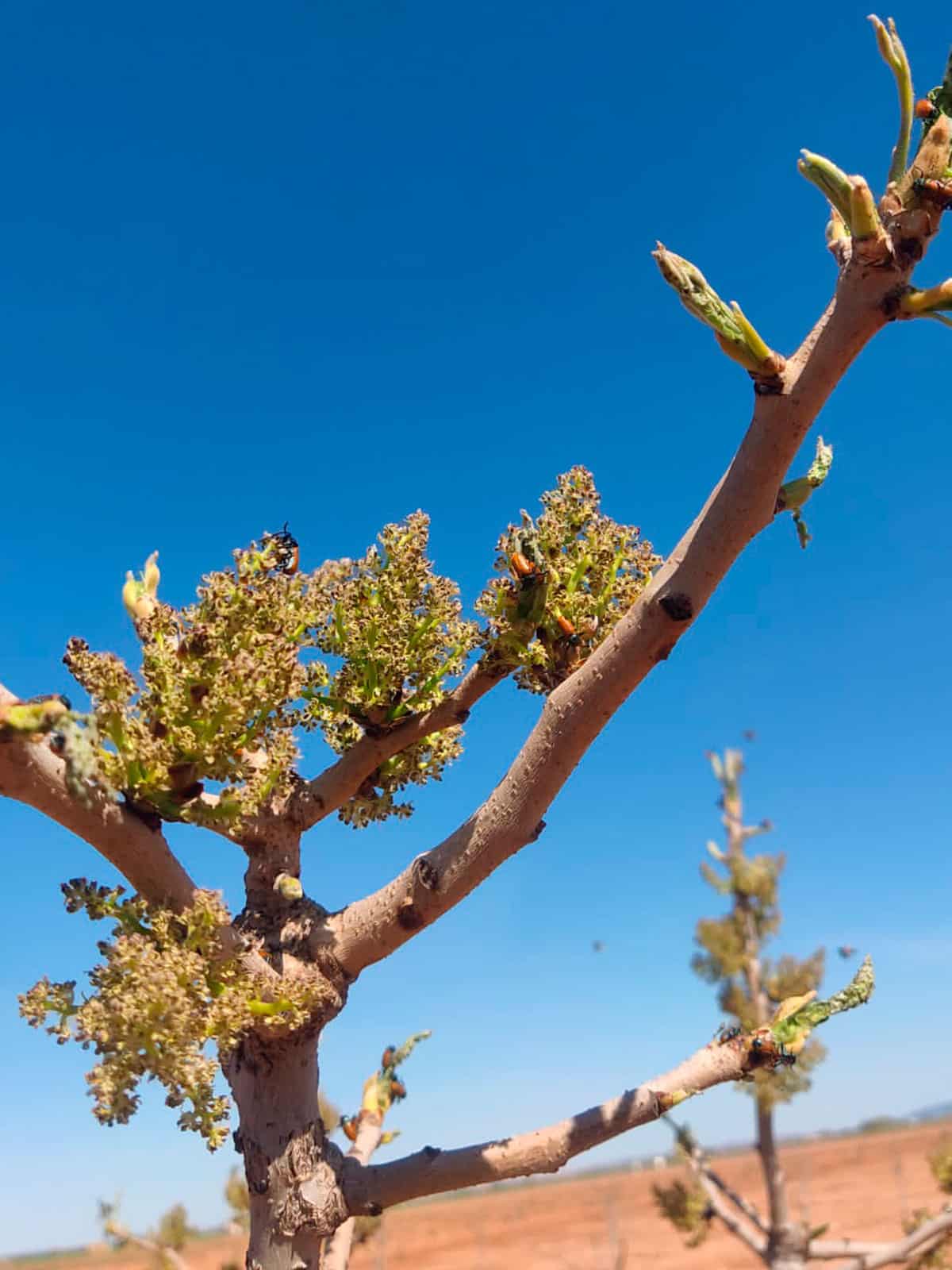Start » Protect your plantation from “Clytra” or “Galeruca” now and minimize damage.
Protect your plantation from “Clytra” or “Galeruca” now and minimize damage.
This year this voracious insect has moved ahead which normally appears from mid-April and especially during the month of May with the progressive increase in temperature. However this year, the absence of weeds sponsored by the lack of rain and abnormally warm weather This beginning of spring, which has advanced flowering in the pistachio by between a week and ten days, has led to the fact that since the beginning of the month in Andalusia and since last week in Castilla la Mancha, this beetle, also known as the beetle, has already It is roaming freely through the plantations, feeding even on clusters of pollen or flowers and the buds of the leaves.
What is the “Clytra” or “beetle” of the pistachio tree?
La Clytra or Galeruca It is a pest that affects the pistachio crop, especially in young plantations or in the most tender shoots of adult plants. It is a red and black beetle, with a black dot on each wing and a metallic orange thorax, which It feeds on the leaves and shoots of the pistachio tree., causing defoliation and weakening of the trees. More and more pistachio crops are visited by this small defoliant beetle, and this year earlier than usual.
Symptoms and main damages caused by Clytra.
The first symptoms and damage caused by this beetle begin to be detected at mid April and during practically the entire month of May, normally coinciding with the rise of spring temperatures, although it is important to say that the beginning of the attack can vary depending on the weather and latitude of the place.
The young adults begin to emerge from their underground shelters where they have spent the winter in the form of pupae, preferentially moving to younger trees. Once on the plant they begin to feed on its most tender leaves with a voracity. capable of causing severe defoliation in just a few hours.
How to combat Galeruca in pistachio?
In this article we will explain how to combat Clytra or Galeruca in pistachio cultivation, following a few simple steps:
- Monitor the appearance of Clytra or Galeruca adults in your plantation from now until the end of May, when temperatures start to rise. You can use yellow chromatic traps to capture them and monitor their presence.

- Apply contact or ingestion insecticides when you detect the first adults in your trees, preferably at dusk, when they are most active. It is not necessary to treat the entire plot, but only the infested trees. You can use products based on pyrethrin, which is a natural insecticide valid for organic crops, with a concentration of 4%. You can also use products based on azadirachtin, diatomaceous earth or natural repellents based on dehydrated garlic. These types of products maintain a population balance of the pest, minimizing its damage over time.
On the other hand, another ecological technique to deal with this beetle consists of shaking the plant, preferably first thing in the morning, so that the adults fall into a bag placed under the affected trees.
In the event that the most ecological techniques are not effective, they should be used chemical means such as any of the phytosanitary products authorized for this pest in pistachio crops. Some examples of these products are chlorantraniliprole 20% or Lambda Cyhalotrin 5%.
- Eliminates host weeds of Clytra or Galeruca in the surroundings of your plantation, such as some cruciferous plants (radish, carmelina, shepherd's blossa...), legumes or composites. These grasses serve as shelter and food for the larvae and adults of this beetle. You can use plowing or herbicides to control them.
- Repeat the insecticide treatment every 10-15 days until the pest disappears or is reduced to tolerable levels. Keep in mind that Clytra or Galeruca can have a second generation under favorable conditions, so you must be attentive to possible outbreaks.
It is also advisable to carry out earth movements in winter when the pupae are buried, since in this way many larvae are destroyed, eliminating the population reservoir.
By following these tips you can combat Clytra or Galeruca in pistachio cultivation and avoid the damage it can cause to your trees. Remember that prevention and integrated control are the best tools to keep your plantation healthy and productive.



